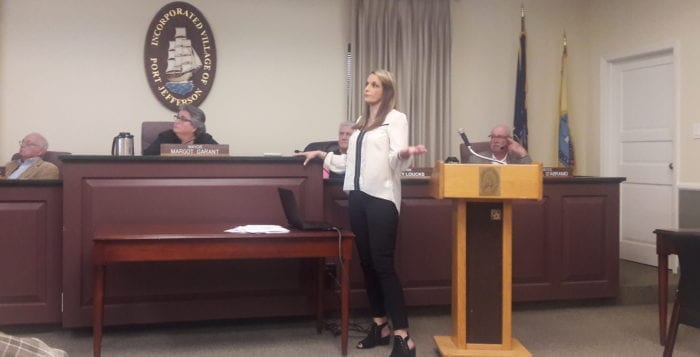By Donna Deedy
New York State Gov. Andrew Cuomo’s (D) agenda includes converting the state to 100 percent carbon-free electricity by 2040. Many people are ready to join the initiative but are unsure what to do.
Gordian Raacke is the executive director of Renewable Energy Long Island, a nonprofit group founded in 2003 that is committed to transitioning Long Islanders to 100 percent renewable sources of energy. His organization educates the public, works with local governments and works with community interest groups to bring about the shifts needed to enable widespread adoption of renewable energy. Raacke offers this advice to people eager to make a move toward clean energy:
Is there a hierarchy of strategies that people can implement to make the switch from fossil fuels to renewable sources?
People often ask me, and I always tell them that the best place to start is by stopping needless energy waste. There are lots of ways to get started, big and small; and if big is not feasible it is totally OK to start small. The important thing is to take the first step, and then the next …
When people are looking to go solar, it is useful to remember that energy efficiency improvements are the most cost-effective way to lower your energy bills. And making energy efficiency improvements first means that the size of the solar array can be smaller and therefore less costly.
Where should homeowners start?
The easiest way for a homeowner to get started in a comprehensive way is to get a free home energy audit through PSEG-LI’s program, www.psegliny.com/saveenergyandmoney/homeefficiency/homeassessments/homeenergyassessment. A specially trained, Building Performance Institute–accredited contractor will assess the energy efficiency of your home with state-of-the-art diagnostic tools and produce a list of recommended improvements with expected costs and savings. The homeowner can then decide which recommendations to follow and can also obtain rebates and financing for this. NYSERDA [New York State Energy Research and Development Authority] also has a web page on this at www.nyserda.ny.gov/Residents-and-Homeowners/At-Home/Home-Energy-Audits.
There are also a lot of useful lists of things that we can do. PSEG-LI’s brochure “66 Ways to Save Energy” is actually pretty good (also online at www.psegliny.com/saveenergyandmoney/tipsandtools/66waystosave; but you have to click on the various tabs to read it all).
NYSERDA has a page at www.nyserda.ny.gov/Residents-and-Homeowners/At-Home/Energy-Saving-Tips.
And there is lots more if you Google it.
What’s the first step?
Super-simple things are, of course, just replacing conventional or compact fluorescent (CFL) light bulbs with more energy-efficient LED bulbs (their light quality has improved a lot over earlier versions, and they are quite inexpensive now). Adding low-flow adapters to kitchen, bath and shower can help reduce hot water heating costs. Replacing the thermostats with internet-controlled smart thermostats can save money on both heating and cooling costs. And sealing cracks around windows and doors can often be done by DIY homeowners. When shopping for new appliances, it pays to look at the EnergyStar ratings and select models with lower annual energy costs. Pool pumps are now much more energy efficient (called variable speed pool pumps) and save a lot of electricity during the summer. Some of these items are offered with attractive utility rebates.
Is it a good time to go solar?
When going solar, it is important to get several estimates from reputable and experienced local contractors. It is also important to fully understand the difference between owning and leasing a system. And, by the end of this year, the federal solar tax credit for residential rooftop solar arrays is decreasing (and will continue to decrease further). To be eligible to get the current 30 percent federal tax credit, a solar array has to be in service by Dec. 31, 2019. So now is a good time to get some solar estimates.
Both Renewable Energy Long Island and the Sustainability Institute at Molloy College offer advice on finding reputable solar contractors. The Sustainability Institute, also a nonprofit, publishes on its website an evaluation on choosing between owning and leasing. Renewable Energy Long Island’s website is www.renewableenergylongisland.org. The Sustainability Institute’s website is www.longislandgreenhomes.org. Its lease vs. buy comparison is under the Go Solar tab at the top of the homepage.















